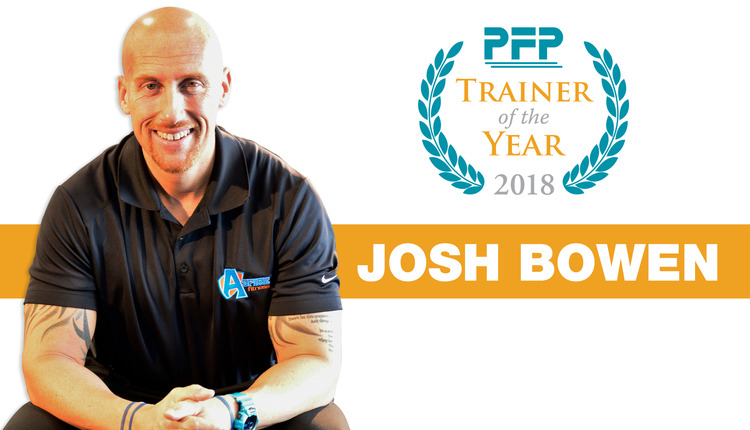To celebrate Allied Health Professions Week, the National Athletic Trainers’ Association (NATA) has prepared 10 professional recommendations that people of all ages can follow to get the most out of their exercise programs -- and stay healthy and active throughout their lives. NATA represents athletic trainers who are among the more than 200 professions being honored during Allied Health Professions Week (Nov. 2-8, 2008).
“Regular physical activity over months and years can help nearly anybody achieve long-term health benefits,” said Marjorie J. Albohm, MS, ATC, president of NATA. “Active people can achieve even more health benefits from exercise by building intensity, and increasing exercise frequency and duration.”
Based on the 2008 Physical Activity Guidelines for Americans published by the U.S. Department of Health and Human Services (HHS), the following recommendations from the National Athletic Trainers’ Association are designed to help individuals start and maintain a safe and healthy exercise and physical fitness program:
Make Time for Exercise
The leading reason that people say they don’t exercise is they simply don’t have the time. Scheduling your workout sessions, just as you would any other important appointment, is the key to fitting exercise into your day. Put it on your calendar, mark it as priority and build in an automatic alert to remind you of its importance.
Get Started
It’s never too late to start exercising. The first step is getting a thorough physical exam. Make sure you tell your doctor that you’re starting an exercise program, so he/she understands that your level of physical activity will increase. Remember to start slowly and gradually increase exercise levels over time.
Set Exercise Goals
Ask yourself what you want to achieve from your exercise program: weight control, muscle development and toning, or building a stronger heart and lungs. To guard against disappointment later, be sure to define your goals first and structure your program to meet those goals.
Get Fit and Toned
The good news is you don’t need to lift heavy weights to gain strength. Resistance exercises also build strength and muscle tone and development. Exercise tubing, which provides excellent resistance, can be used in toning routines that include every major muscle group. Multiple repetitions of each exercise (two sets of 15 or three sets of 10) are recommended.
Exercise to Manage Your Weight
Weight loss or weight management is all about burning more calories through exercise than you take in when you eat. The more you exercise, and the harder your exercise sessions are, the more calories you’ll burn. So, exercise can actually be a strategy that allows you to occasionally indulge yourself by having that extra bite of dessert.
Exercise Outside of the Gym or Health Club
Even if you can’t make it to a gym, you can still take a vigorous walk at some point during the day. And bring workmates along too – exercising with others is more enjoyable than exercising alone; plus, exercising with others has been shown to encourage greater exercise compliance. Keep exercise bands by your desk and have a list of three to five resistance exercises for major muscle groups that you can repeat two to three days a week.
Strengthen Your Heart and Lungs
This objective should be a component of every exercise program. Any form of aerobic exercise that elevates the heart rate for a period of 30 to 40 minutes at least three days a week, is sufficient to improve your heart and lung fitness.
Work Hard For Best Results
When engaging in aerobic activities, you should be working at a level of intensity where it’s difficult to have a conversation with the person next to you. And it should also make you break a sweat.
Add In Aerobic Activities
Alternating weight-bearing activities with non-weight-bearing activities is recommended. Jogging is fine, but not every day. Biking, swimming and elliptical machines are excellent non-weight-bearing activities that take stress off your knee and other weight bearing joints.
Stretch To Increase Flexibility
Improving flexibility increases mobility and helps your entire body function better during the day. Stretching major muscle groups with specific exercises for 15 to 20 minutes three days a week is recommended. You can also incorporate stretching into your day by reaching, bending and gently twisting as you perform your daily activities.
According to HHS Guidelines, adults should perform a minimum of two and a half hours of moderate-intensity aerobic activity each week, such as brisk walking, ballroom dancing or general gardening. Or they should strive for 75 minutes of vigorous-intensity aerobic physical activity each week, like jogging, aerobic dancing and jumping rope. Children and adolescents (age 6 to 17) should include one hour or more of physical activity daily – activity should primarily be aerobic but should also include muscle-strengthening and bone-strengthening activities.
“It is important to encourage people of all ages to participate in physical activities that are not only appropriate for their age, but those that are also are enjoyable to do and offer variety over time,” Albohm counsels.
The National Athletic Trainers' Association (www.nata.org) represents and supports 30,000 members of the athletic training profession. NATA advocates for equal access to athletic trainers for patients and clients of all ages and supports H.R. 1846. Only 42 percent of high schools have access to athletic trainers. NATA members adhere to a code of ethics.
“Regular physical activity over months and years can help nearly anybody achieve long-term health benefits,” said Marjorie J. Albohm, MS, ATC, president of NATA. “Active people can achieve even more health benefits from exercise by building intensity, and increasing exercise frequency and duration.”
Based on the 2008 Physical Activity Guidelines for Americans published by the U.S. Department of Health and Human Services (HHS), the following recommendations from the National Athletic Trainers’ Association are designed to help individuals start and maintain a safe and healthy exercise and physical fitness program:
Make Time for Exercise
The leading reason that people say they don’t exercise is they simply don’t have the time. Scheduling your workout sessions, just as you would any other important appointment, is the key to fitting exercise into your day. Put it on your calendar, mark it as priority and build in an automatic alert to remind you of its importance.
Get Started
It’s never too late to start exercising. The first step is getting a thorough physical exam. Make sure you tell your doctor that you’re starting an exercise program, so he/she understands that your level of physical activity will increase. Remember to start slowly and gradually increase exercise levels over time.
Set Exercise Goals
Ask yourself what you want to achieve from your exercise program: weight control, muscle development and toning, or building a stronger heart and lungs. To guard against disappointment later, be sure to define your goals first and structure your program to meet those goals.
Get Fit and Toned
The good news is you don’t need to lift heavy weights to gain strength. Resistance exercises also build strength and muscle tone and development. Exercise tubing, which provides excellent resistance, can be used in toning routines that include every major muscle group. Multiple repetitions of each exercise (two sets of 15 or three sets of 10) are recommended.
Exercise to Manage Your Weight
Weight loss or weight management is all about burning more calories through exercise than you take in when you eat. The more you exercise, and the harder your exercise sessions are, the more calories you’ll burn. So, exercise can actually be a strategy that allows you to occasionally indulge yourself by having that extra bite of dessert.
Exercise Outside of the Gym or Health Club
Even if you can’t make it to a gym, you can still take a vigorous walk at some point during the day. And bring workmates along too – exercising with others is more enjoyable than exercising alone; plus, exercising with others has been shown to encourage greater exercise compliance. Keep exercise bands by your desk and have a list of three to five resistance exercises for major muscle groups that you can repeat two to three days a week.
Strengthen Your Heart and Lungs
This objective should be a component of every exercise program. Any form of aerobic exercise that elevates the heart rate for a period of 30 to 40 minutes at least three days a week, is sufficient to improve your heart and lung fitness.
Work Hard For Best Results
When engaging in aerobic activities, you should be working at a level of intensity where it’s difficult to have a conversation with the person next to you. And it should also make you break a sweat.
Add In Aerobic Activities
Alternating weight-bearing activities with non-weight-bearing activities is recommended. Jogging is fine, but not every day. Biking, swimming and elliptical machines are excellent non-weight-bearing activities that take stress off your knee and other weight bearing joints.
Stretch To Increase Flexibility
Improving flexibility increases mobility and helps your entire body function better during the day. Stretching major muscle groups with specific exercises for 15 to 20 minutes three days a week is recommended. You can also incorporate stretching into your day by reaching, bending and gently twisting as you perform your daily activities.
According to HHS Guidelines, adults should perform a minimum of two and a half hours of moderate-intensity aerobic activity each week, such as brisk walking, ballroom dancing or general gardening. Or they should strive for 75 minutes of vigorous-intensity aerobic physical activity each week, like jogging, aerobic dancing and jumping rope. Children and adolescents (age 6 to 17) should include one hour or more of physical activity daily – activity should primarily be aerobic but should also include muscle-strengthening and bone-strengthening activities.
“It is important to encourage people of all ages to participate in physical activities that are not only appropriate for their age, but those that are also are enjoyable to do and offer variety over time,” Albohm counsels.
The National Athletic Trainers' Association (www.nata.org) represents and supports 30,000 members of the athletic training profession. NATA advocates for equal access to athletic trainers for patients and clients of all ages and supports H.R. 1846. Only 42 percent of high schools have access to athletic trainers. NATA members adhere to a code of ethics.







